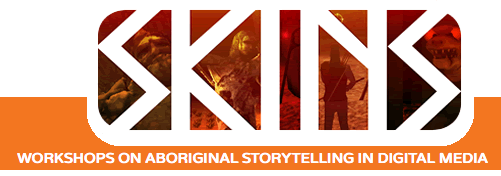The following look into the preservation of Indigenous Voice.
Alberta Learning Languages Initiative; “Ensuring Language Learning Opportunities for Indigenous Children” (University of Alberta, 2004) with a follow-up colloquium called “Working Together to Support Indigenous Language Education” (University of Alberta 2005)
First Peoples’ Cultural Foundation of British Columbia (FPCF): First Voices project, 2004
Foley, J. M. (2012). Oral Tradition and the Internet: Pathways of the Mind. Urbana: University of Illinois Press.
Library and Archives Canada. (2009).Our Voices, Our Stories: First Nations, Métis and Inuit Stories. https://www.collectionscanada.gc.ca/stories/index-e.html
Paul, E., Johnson, H., & Raibmon, P. (2014). Written As I Remember It: Teachings ([glottal Stop][schwa]ms Ta[glottal Stop]aw) From the Life of a Sliammon Elder. Vancouver [British Columbia]: UBC Press.
University of California, Los Angeles (2000) Heritage Language Research Priorities Conference
Voices of Our Elders. (cover story). (2015). News from Native California, 28(3), 14.
Category Archives: Archive
Non natives experience to address ignorance
These field schools seem to have potential in narrowing the gap between natives and non natives.
Castleden, H., Daley, K., Sloan Morgan, V., & Sylvestre, P. (2013). Settlers unsettled: using field schools and digital stories to transform geographies of ignorance about Indigenous peoples in Canada. Journal of Geography In Higher Education, 37(4), 487-499.
Indigenous map of Turtle Island (North America)
First Nation Seeker site provides a collection maps of different areas and at different times through history as to the location of the various locations of First Nations. I can see this being used in class side by side with say the National Geographic Atlas to compare the populations of natives and non native communities. I was surprised at the number and expanse of territory covered by the First Nations before Europeans arrived.
http://www.firstnationsseeker.ca/
Kinship and Indigenous Identity
The Alliance Project: Yolngu people of Eastern Arnhem Land, Northern Territory, Australia (http://study.hs.sugiyama-u.ac.jp/alliance/)
This project to record the relationships of a community may have started with good intentions but raised questions for me. It has hints of European /Western scientific experimentation. The natives son’t seem to require this information as to who they are related to but outsiders seem to want it.
New Goals
I hadn’t looked at the new Sustainable Development Goals yet, and researching for this project made me take a closer look. Very interesting. They have expanded since the MDGs.
https://sustainabledevelopment.un.org/?menu=1300
Research Center
I came across Pew Research Centre and their reports. Their analyses and reports are very useful, and I was able to find a report targeted specifically at technology use with mobile phones in Africa.
http://www.pewglobal.org/files/2015/04/Pew-Research-Center-Africa-Cell-Phone-Report-FINAL-April-15-2015.pdf
Innovation
I found an article in my research that was written for The Guardian (UK paper) about innovative uses of technology in developing countries. The stories and images are very powerful.
http://www.theguardian.com/sustainable-business/gallery/technology-developing-countries-impact-pictures
Manitoba announces ‘historic’ aboriginal language partnership
This article outlines how the Government of Manitoba and various Native groups will work together to introduce various language programs aimed at keeping Canada’s indigenous languages alive. Many of these first languages are under threat of going extinct and these groups hope to reverse this trend through instruction and promotion. This program is seen to be a long term project because of the time factor involved in training teachers and creating curriculum but in the future it is hoped that students in Manitoba will be able to learn Manitoba Cree, Dene, Ojibwe, Dakota and Oji-Cree languages.
Aboriginal Territories in Cyberspace (AbTeC)
AbTeC is a network of academics, artists and technologists whose goal is to define and share conceptual and practical tools that will allow Native people to create new, Aboriginally-determined territories within the web-pages, online games, and virtual environments that we call cyberspace.
AbTeC’s roots lie with a project called CyberPowWow, a pioneering on-line gallery and chat space for contemporary Aboriginal art. It was through CyberPowWow that we realized that, even on the Internet, Native people need a self-determined place to call home.
From this beginning AbTeC has moved into training native youth how to use the tools to new media to express themselves through video games, websites and performance art.
Skins Digital Media (Video game) Workshops
Skins is a series of digital-media workshops for Aboriginal youth taught by a determined team of game designers, artists and educators known as Aboriginal Territories in Cyberspace (AbTeC).
The Course begins with the students being introduced to a variety of stories from their culture and the art of oral traditional storytelling methods by a group of elders. With that foundation in place, the students then learn important skills for the production of video games.
Lessons are taught by faculty, students and graduates of the Computation Arts programme at Concordia University. They are joined by Aboriginal mentors who lend their considerable expertise as cultural consultants, as well as moral support to the young producers.
Skins aims to empower Native youth to be producers of new technologies, not just consumers of them.

